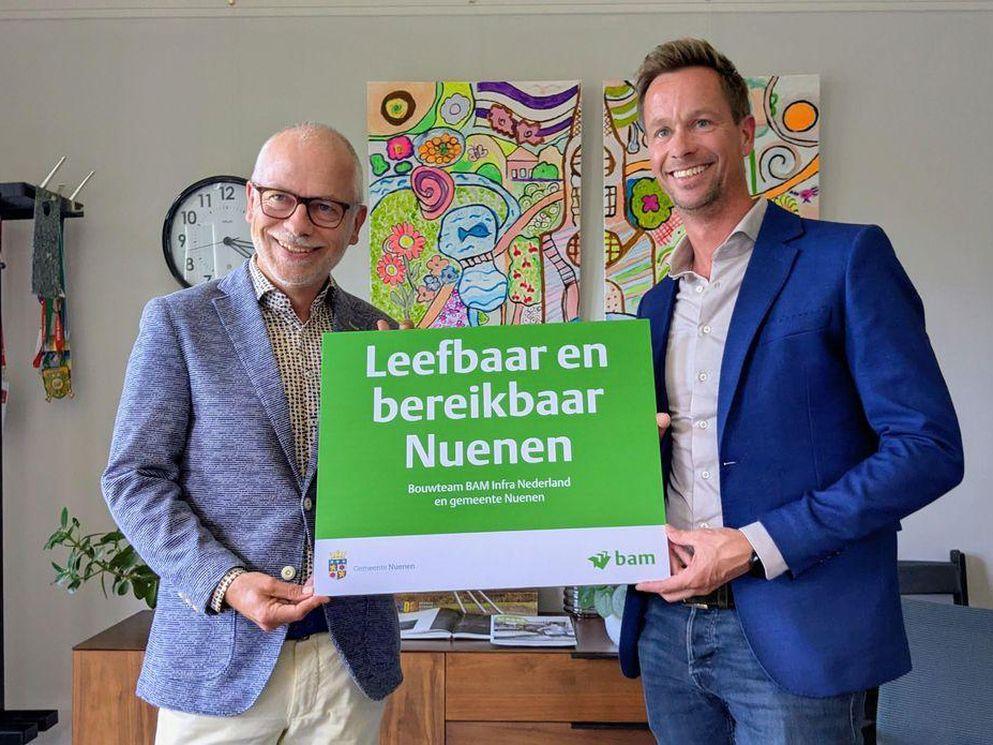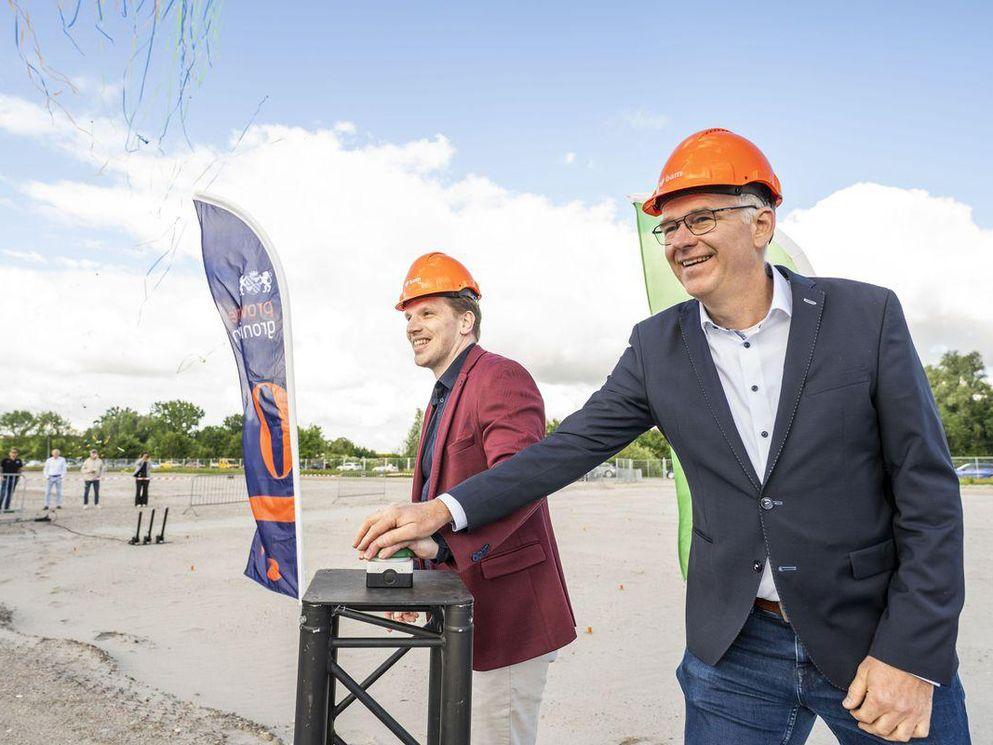


Celebrating sustainable milestones: BAM’s SBTi validation and CDP rating explained
BAM recently marked two important milestones in its sustainability journey: the validation of its targets by the Science-Based Targets initiative (SBTi) and the inclusion on CDP’s ‘A-list’ of top-performing companies in the field. We spoke to Wouter Schakel, Group Head of Sustainability, about what these mean for BAM and how we are progressing in our strategy to build a sustainable tomorrow.
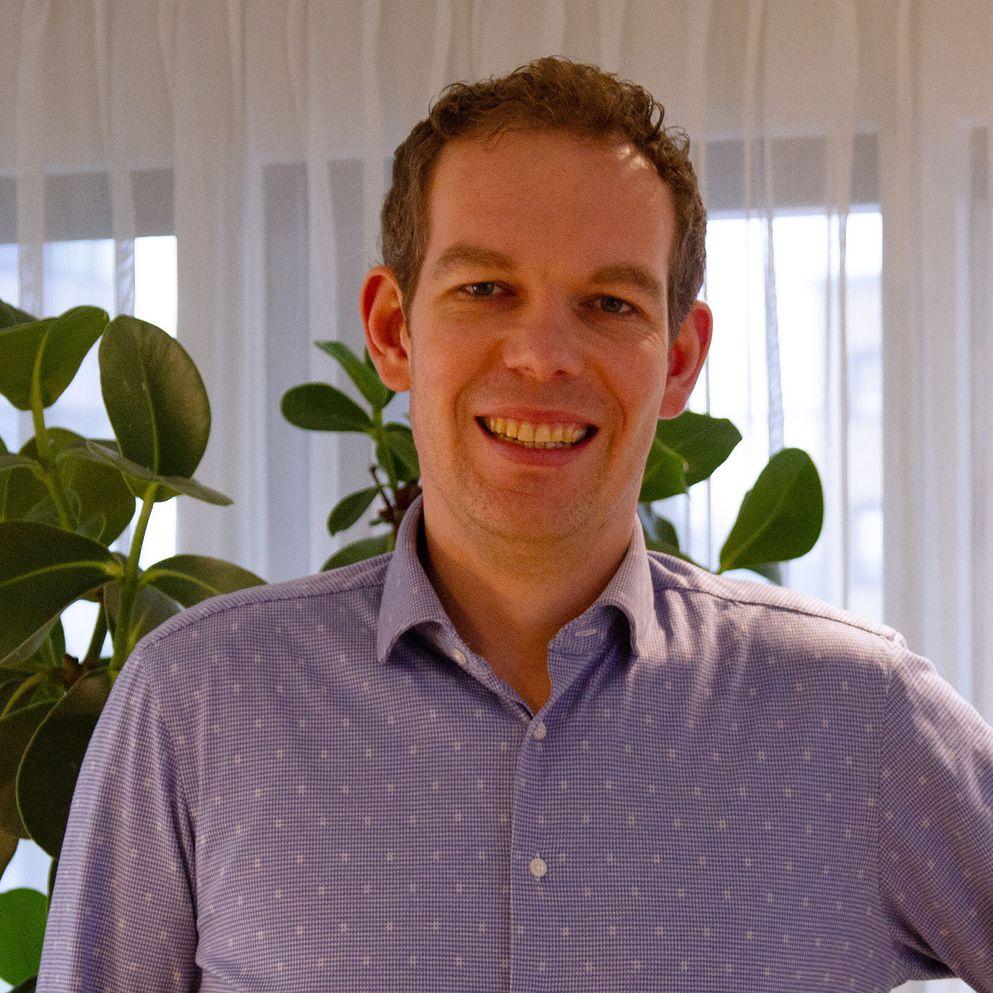
First, can you tell us about your role and what it involves?
‘I'm the Group Head of Sustainability within the strategy team at BAM's corporate centre, and I'm responsible for setting the sustainability strategy and its implementation in collaboration with the wider BAM sustainability community across our business. I keep our strategy up to date, cohesive and competitive, ensure our targets are realistic and achievable, and provide support to the rest of the business.’
What are BAM's sustainability goals, and how do you aim to achieve them?
‘We have set targets on six sustainability themes, which include reductions of our Scope 1, 2 and 3 carbon emissions over the years to come, ultimately reaching net-zero by 2050. We are taking several steps to achieve these targets, such as transitioning to renewable energy. For example, 66% of our vehicle fleet is now fully electric.
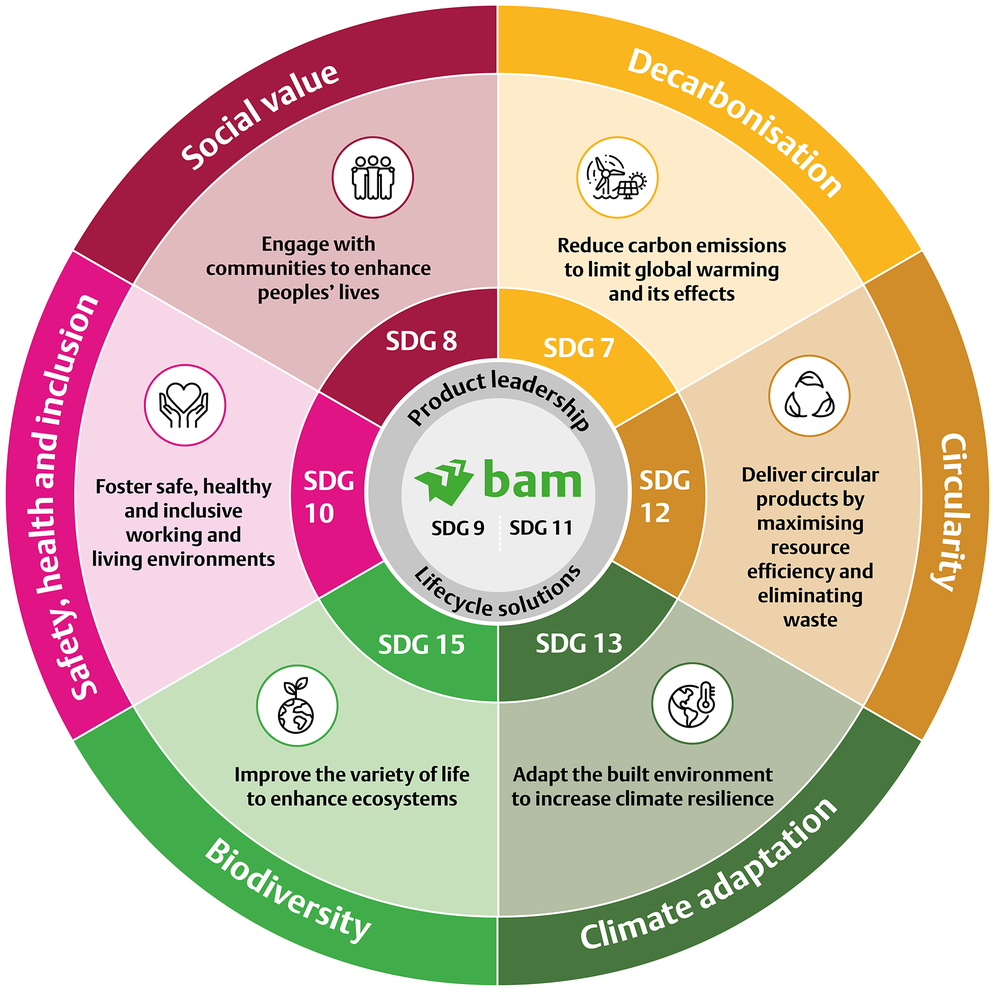
We are also taking steps on biodiversity, circularity and social value. Since the construction industry is a major driver of biodiversity loss, we are currently focused on gaining insights into the impact of our projects and where we can mitigate that, such as by integrating the topic into tenders and helping to restore degraded ecosystems. By doing so, we work towards a world where nature and human activities are in balance. When it comes to circularity, we are designing with circularity in mind and reducing our use of non-biobased virgin materials, including concrete, steel and asphalt, which are known for their substantial environmental impact.
Last but certainly not least, people are at the forefront of our mission to build a sustainable tomorrow. We aim to contribute to a safe, sustainable and just society through equal treatment and opportunities, learning and development, and delivering social value in the local communities where we carry out our projects.’

BAM recently celebrated two milestones: validation of its sustainability targets by the SBTi and inclusion in CDP's 'A list'. Could you briefly explain what these are?
‘The Science-Based Targets initiative (SBTi) and CDP are non-profit organisations that aim to enable transparent reporting and set benchmarks for success. The SBTi offers validation of company sustainability targets to demonstrate that they are both ambitious enough and based on climate science. Where the SBTi focuses on target setting, the CDP recognises companies that are making tangible progress on sustainability. It's quite an achievement to make it onto their A-list, and we have now been included for the sixth consecutive year, which is a legacy we can be very proud of.’
What was involved in achieving this recognition?
‘These achievements are a result of the effort people across BAM put in on a daily basis. The head office might set the targets, but it's our 'boots on the ground' that move us forward.
The SBTi validation process took around six months; it’s a thorough screening process that involves providing a lot of evidence and answering enquiries. Our inclusion in the CDP list took around three months from completing the questionnaire to hearing the result of our inclusion. Both achievements were the result of transparency and strong collaboration as we gathered all the necessary information from various teams.’
What is the significance of SBTi and CDP for BAM?
‘These milestones send a strong signal to our clients and the wider industry that we are leading in setting sustainability targets and delivering on them. Many large companies talk about sustainability, but these independent accreditations boost the perception of BAM as a leader in the field and make our story concrete for existing and potential clients.’
What are some of the ways in which sustainability is applied across BAM?
‘We’ve started to see a shift over the years from a reactive approach to sustainability, where it was treated as an optional add-on if a client requested it, to something that is embedded from the start: from our strategy to our tenders and the final result. We are increasingly advising our clients on more sustainable options for their projects, which benefits our relationship as well as wider society.
These projects are linked to our three strategic themes of focus, transform and expand. 'Focus' is about selecting profitable projects that align with our sustainability targets and risk profile. 'Transform' is about making our products and services more digital, scalable and sustainable. And 'Expand' relates to growing in the areas where we can provide solutions to societal challenges, such as in energy markets and sustainable renovations.
One of the recent initiatives I'm really proud of is our wooden housing concept, Flow. This concept came from asking ourselves the question, what if we were to bring back timber as a construction material, and not only if clients specifically request it? We recently announced that we will build 33 more of these homes in Gemert, the Netherlands. ’
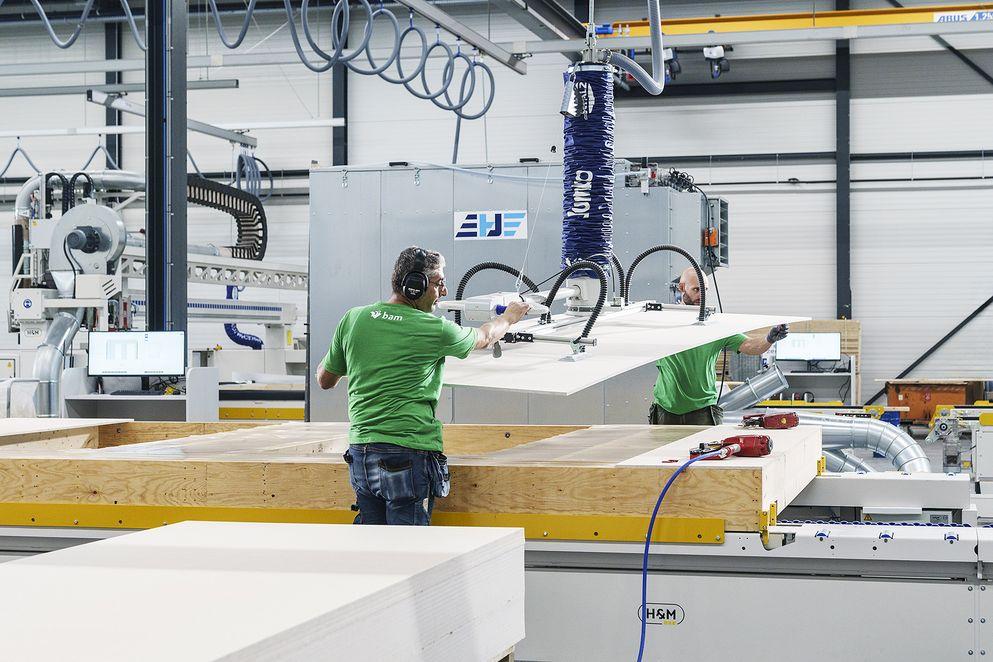
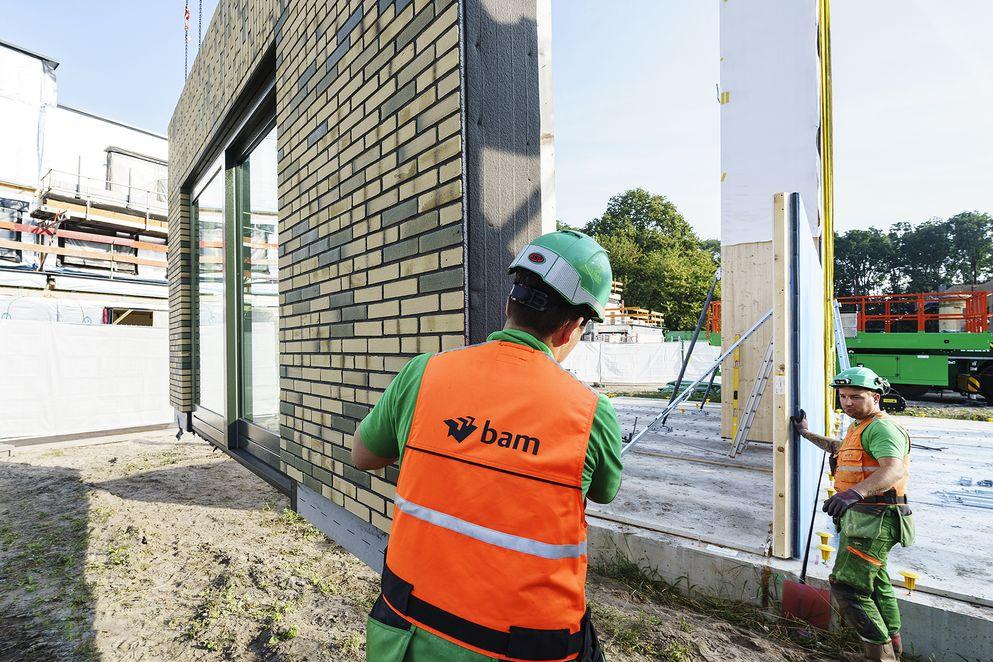
How can every BAM colleague contribute to the strategy ‘Building a sustainable tomorrow’?
‘Developing a sustainability mindset looks different for everyone, but I encourage colleagues to make sure it’s part of conversations with colleagues, clients and suppliers.
In the context of shifting discussions in the public sphere around sustainability, I would also like to encourage colleagues to stay the course. We believe that this is the right direction, not only because it’s better for the world but also because it's better for our business in the long run. If we can keep sharing that message, it will help us make a difference and navigate uncertainty along the way.’
What are the next steps in BAM's sustainability journey?
‘I believe that we’re on the right track with our emissions reduction and other climate change mitigation-related measures, but when it comes to biodiversity and circularity, we have further to go. I will be working closely with colleagues in the business to address these topics and further embed sustainability at the core of our business. Just as we embed safety and financial factors into our projects, I want sustainability to be considered business as usual. This is a big opportunity for us to grow, collaborate across the value chain, and further position ourselves as the leading construction company for a sustainable tomorrow.’
Read more about BAM’s sustainability strategy.


